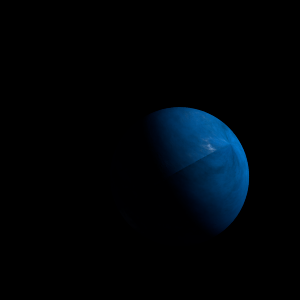|
|
Space Astro
|
Info for exoplanet "Uwara"
| Scientific (actual) data |
|---|
| Name | K2-160 b |
| Planet status | Confirmed |
| Radius | 0.284 |
| Orbital period | 3.70587 |
| Inclination | 88.254 |
| Discovered | 2018 |
| Updated | 2021-02-05 |
| Tconj | 2457590 |
| Publication | Published in a refereed paper |
| Detection type | Primary Transit |
| Alternate names | 2MASS J12161309-0333111 b, EPIC 201227197 b, EPIC 201227197.01, WISE J121613.09-033311.1 b |
| Star name | K2-160 |
| Right ascension | 184.06° |
| Declination | -3.55° |
| Mag j | 11.427 |
| Mag h | 11.087 |
| Star distance | 318.19 |
| Star metallicity | 0.07 |
| Star mass | 0.98 |
| Star radius | 0.91 |
| Star temperature | 5649 |
| Star alternate names | 2MASS J12161309-0333111, EPIC 201227197, WISE J121613.09-033311.1 |
| Wikipedia article | K2-160 b |
Back
| |
| Fictional info (?) |
|---|
| Suggested name | Uwara |
| Planet type | Cold planet |
| . |
| Atmosphere | Carbon monoxide | 99% |
| Hydrogen chloride | 0.28% |
| Ammonium hydrosulfide (NH4SH) | 0.094% |
| Nitrogen | 0.0035% |
| Water vapor | 0.00012% |
| Atmospheric pressure | 0.16 bar |
 |
| No known satellites |
| Google search for Uwara |
|
Website by Joachim Michaelis
|
|
|
|